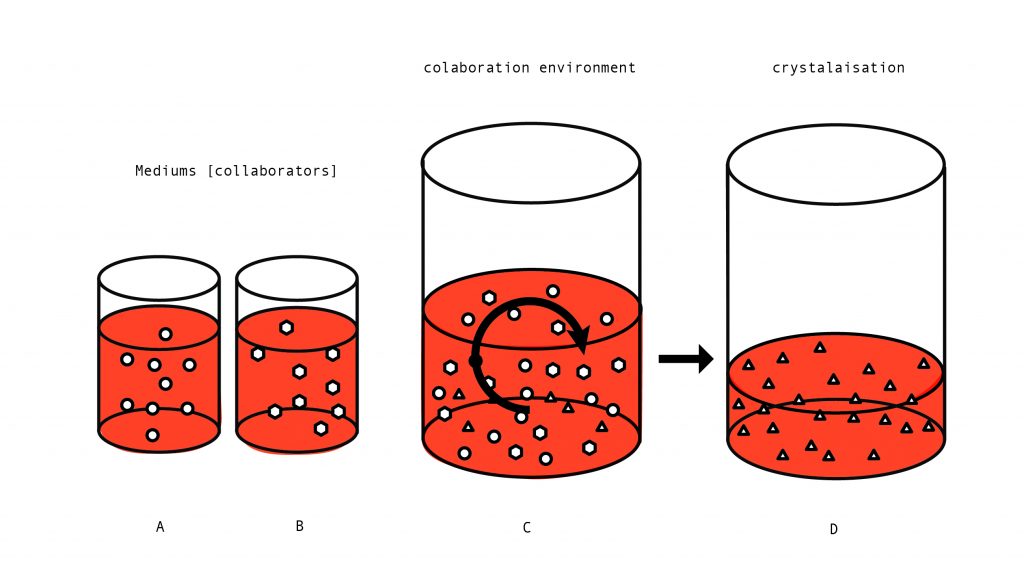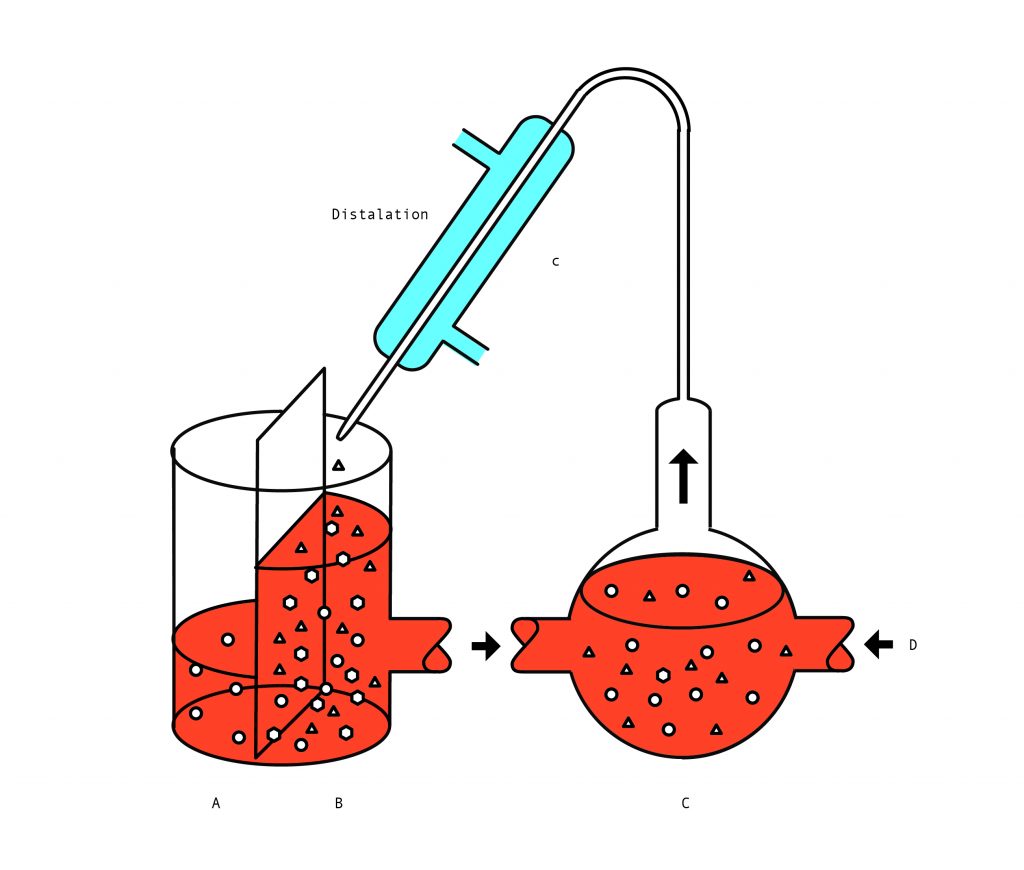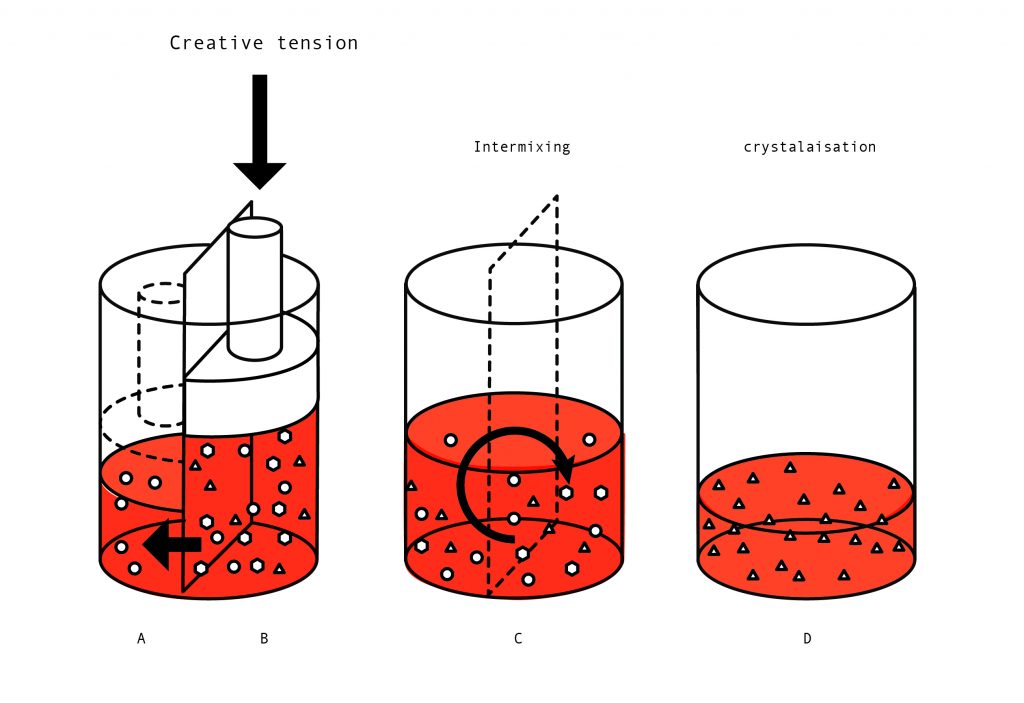
Osmosis is the gradual permeation of ideas between different fields. It implies a passive slow diffusion, an unconscious assimilation of knowledge. In biology it is a process by which molecules tend to pass through a semi-permeable membrane from a less saturated medium into a more saturated one. This leads to two mediums of equal saturation through a one-directional flow, resulting in two different volumes. These illustrations explore the idea of osmosis as a model for ‘collaboration’ as an alternative to the idealised collaborative sciart model often represented through the vesica Piscis [Fig. 1 and 2]. One in which ideas permeate through osmotic proximity [3] created by collaborative environment and mediums separated by a ‘proximal membrane’ through which ideas and knowledge can permeate [Fig 3]. An additional anti-proximal phase [4] is inserted, which represents a process of ‘going away’ where ideas are re-modulated outside of the collaboration environment before being returned back to the mix. Reverse osmosis [5] works through an imposition of pressure which forces molecules back across the membrane. This restores the environments to one in which the osmotic process can cycle again. Or the environment can be subjected to a process of rendering [Fig. 5d] from which the results of collaboration can crystallise.


Two mediums come together in a shared environment, the ‘collaboration environment’. The collaboration environment [c] could be a host structure [academic or cultural] a residency environment [science laboratory] a series of meetings, a research project. Skills and ideas and methods intermix new [interdisciplinary] knowledge is created through a transformative process [transdisciplinary]. This is often how sciart collaboration is represented.

In this proximal osmosis model, a division is maintained by a ‘proximal membrane’ a permeable interface formed of the specific interests of both parties through which a slow infusion of skills and ideas and methods flow. Over time this in itself can lead to new ideas forming as a result. For purposes of the illustration, A could be a Scientist B is an Artist and the collaboration environment could be a laboratory.

The going away / digestion distillation / This is quite specific to my own practice. The ideas and reordering these in the Anti-proximal space [c] [This could be the artist’s studio] Here ideas and methods undergo a process of or active extraction and assimilation simulation and recreation. This is further stimulated through the introduction of extraneous ideas mistakes and mutations occurring due to the rapid process of distillation [4c] Elements return to the collaboration environment. This is inherently an imbalanced representation. However – a more equal-sided process can be represented simply by adding on anti-proximal spaces for both collaborators [4.d] whereby a more balanced model would be illustrated. Both sides are contributing and influenced equally.

In reverse osmosis – the pressure is applied to medium [B] through which elements are transmitted back to [A] and visa versa. Some elements are now shared across the membrane. In this model, pressure takes the form of a ‘creative tension’ which could be an exhibition opportunity/production of a research paper/ intensive critical reflection or analysis. Process 3-4 can now repeat. The membrane has now served its purpose and the collaboration environment [3d] now resembles the idealised model [Fig. 2c and d] A final rendering process can now take place which leads to the production of a work. A final analysis and reflection results in some form of shared outcome.